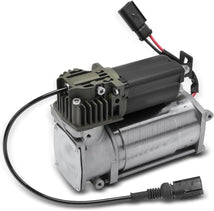When embarking on DIY projects, selecting the right air compressor can significantly impact your results. This guide aims to provide you with a comprehensive understanding of air compressors, ensuring you make an informed choice that meets your needs.

Understanding Air Compressors
An air compressor is a versatile tool that converts power into potential energy stored in pressurized air. This pressurized air can be used for various applications, including powering pneumatic tools, inflating tires, and even painting. But how do you determine which type of air compressor is best for your specific projects?
Types of Air Compressors
- Reciprocating Air Compressors: These are the most common type, ideal for home use. They are available in single-stage and two-stage models, with the latter providing higher pressure for more demanding tasks.
- Rotary Screw Compressors: These are typically used in industrial settings. They offer continuous airflow and are more efficient for larger operations.
- Portable Air Compressors: Perfect for DIY enthusiasts, these compressors are lightweight and easy to transport, making them suitable for various outdoor tasks.
- Oil-Free Air Compressors: These models require less maintenance and are ideal for tasks that require clean air, such as painting.
Key Features to Consider
When selecting an air compressor, several features should be taken into account:
- Tank Size: A larger tank can store more air, allowing for longer use without needing to refill.
- PSI and CFM Ratings: Understanding the pressure (PSI) and airflow (CFM) ratings is crucial. Higher ratings mean the compressor can handle more demanding tools.
- Noise Level: If you're working in a residential area, consider a quieter model to minimize disturbances.
- Portability: For those who need to move their compressor frequently, weight and wheel design are essential.
Choosing the Right Air Compressor for Your Needs
To choose the right air compressor, first assess your project requirements. What tools will you be using? Will you need continuous airflow, or will intermittent use suffice? If you plan to use tools like nail guns or spray guns, a compressor with a higher CFM rating will be necessary.
Additionally, consider your workspace. If you have limited space, a compact or portable model may be more suitable. For larger projects, investing in a stationary compressor could be beneficial.
Maintenance Tips for Your Air Compressor
Proper maintenance of your air compressor will ensure its longevity and efficiency. Here are some essential tips:
- Regularly check and change the oil if applicable.
- Drain the tank to prevent moisture buildup.
- Inspect hoses and fittings for leaks.
For a wide selection of high-quality air compressors, visit  .
.
Conclusion
In conclusion, selecting the right air compressor for your DIY projects involves understanding the types, features, and maintenance requirements. By considering your specific needs and the tasks at hand, you can make an informed decision that will enhance your DIY experience. Happy building!








